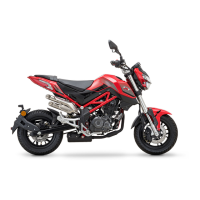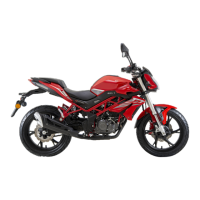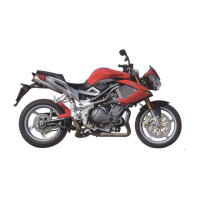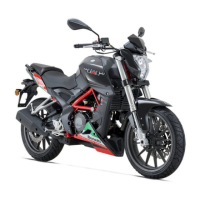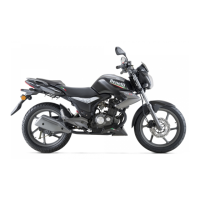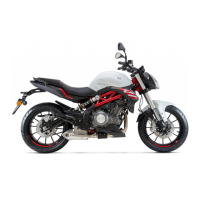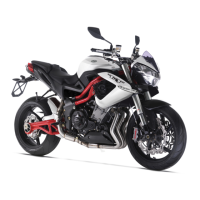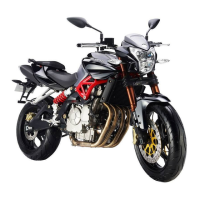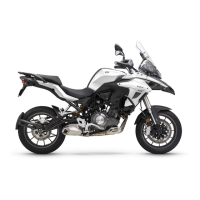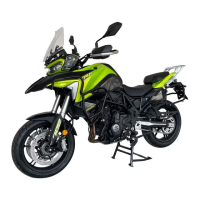Checking Wheels
●Lift the front wheel / rear wheel from the ground.
S
pecial Tools: jack and jack accessories
●
Gently rotate the wheel to check whether the wheels
are able to rotate smoothly.
★
If the wheels do not rotate smoothly, replace the hub
bearings (see “Removing / Installing Wheel Bearings”).
●
Inspect the wheels for small cracks, dents, bends or
deformations.
★ If the wheel is broken, replace it!
●
Remove the wheels and support the wheels and tires
using wheel axle.
●Use the micrometer to measure the axial oscillation
[
A] and the radial oscillation [B] of the rim.
★If the oscillation of rim exceeds the limit, check the
hub bearing (see “Checking Hub Bearing”) .
Rim oscillation (in the case of installing tires)
Standards:
Axial oscillation ≤TIR 0.5 mm
Radial oscillation ≤TIR 0.8 mm
Use limit:
Axial oscillation TIR 1.0 mm
Radial oscillation TIR 1.0 mm
Do not repair the damaged wheels! The damaged
wheel (except that wheel bearing is damaged)
must be replaced, to ensure the safe riding of
motorcycle.
Checking Wheel Axle
●
Disassemble the front and rear wheel axles (see
“Disassembling Front Wheel / Rear Wheel”).
●
Visually inspect the front and rear wheel axles for
damage.
★If the wheel axle is damaged or bent, please replace
it!
●Place the wheel axle on two V-shaped blocks with a
spacing of 100 mm [A] between them. In the middle of
the two V-shaped blocks, put a dial indicator [B]. Turn
the [C] wheel axle to measure the oscillation. The
difference between the maximum and minimum
readings of the dial indicator is the oscillation of the
wheel axle.
★If the wheel axle oscillation exceeds the use limit,
please replace the wheel axle!
Shaft oscillation / 100 mm
Standard: ≤TIR 0.03 mm
Use limit: TIR 0.2 mm
- 291 -
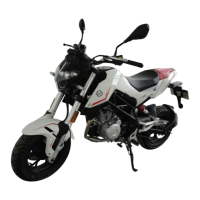
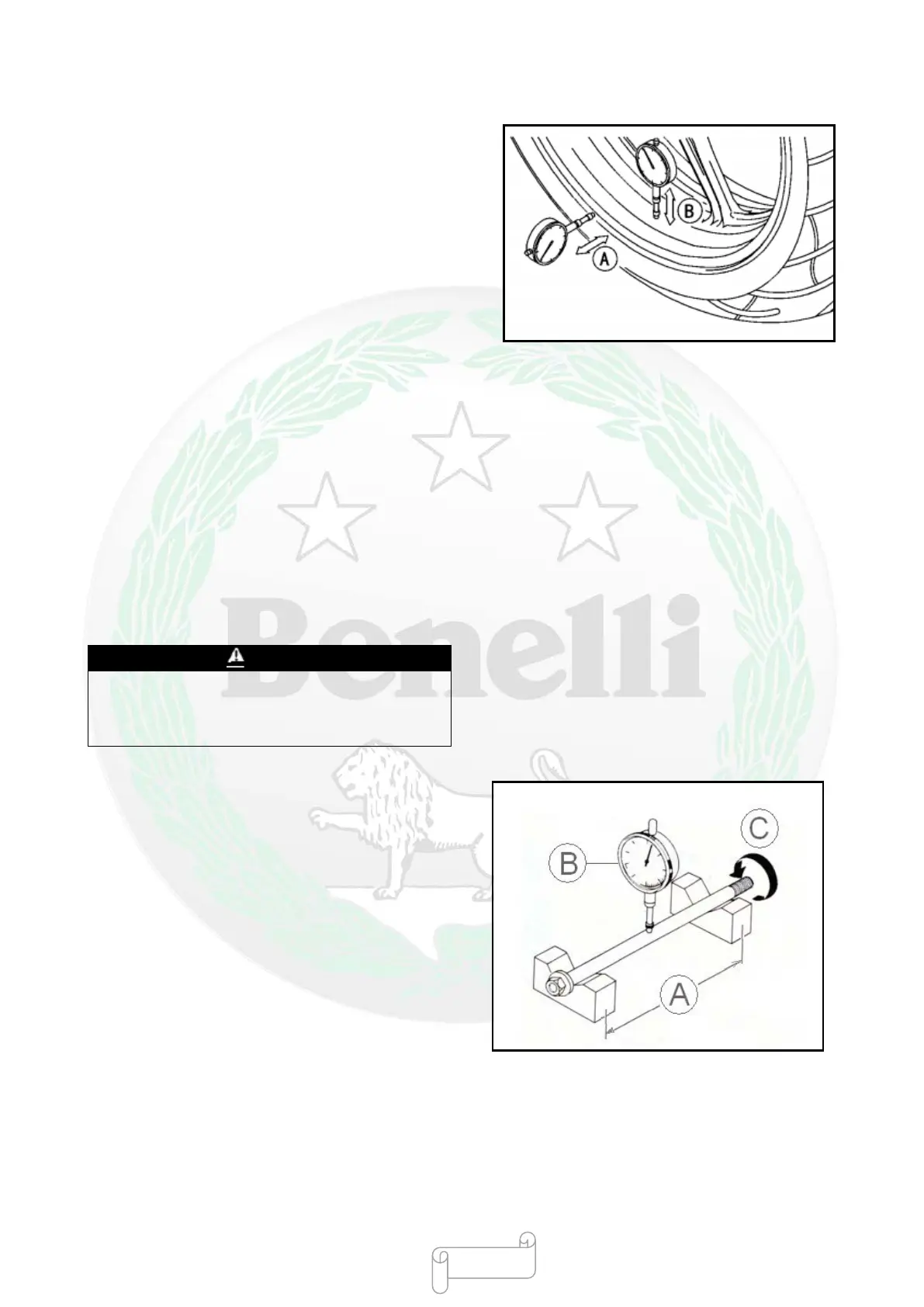